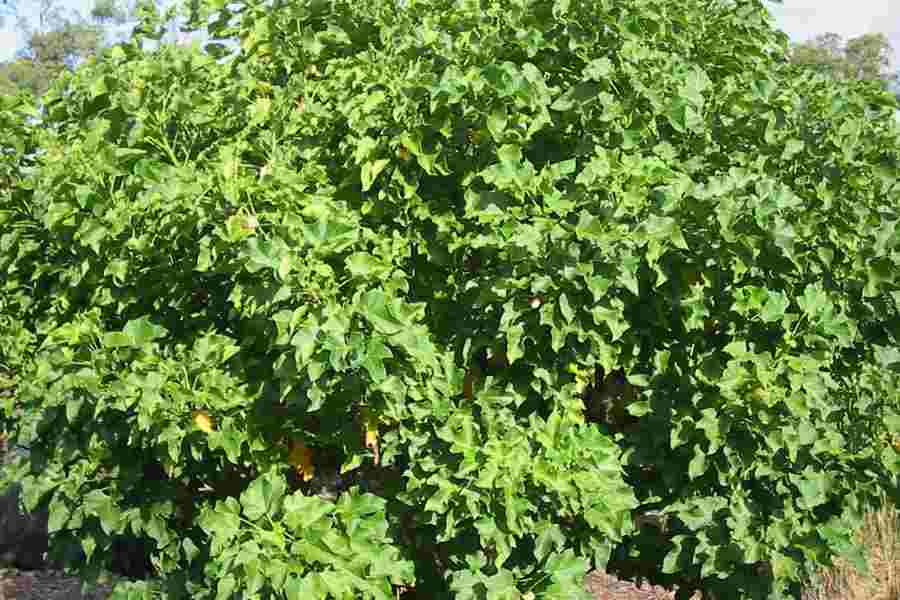
PT Sinergi Oleo Nusantara
Add a review FollowOverview
-
Founded Date April 12, 1980
-
Sectors Security Guard
-
Posted Jobs 0
-
Viewed 130
Company Description
What is a Jatropha Curcas Tree: Jatropha Uses in The Landscape
When you acquire through links on our site, we may make an affiliate commission. Here’s how it works.
Jatropha (Jatropha curcas) was when touted as the new wunderkind plant for biofuel. What is a Jatropha curcas tree? The tree or bush grows in any type of soil at a quick rate, is poisonous, and produces fuel suitable for diesel motor. Continue reading for more Jatropha tree details and see how you rate this plant.

What is a Jatropha Curcas Tree?
Jatropha is a perennial shrub or tree. It is drought-resistant and easy to grow in tropical to semi-tropical areas. The plant lives for as much as 50 years and may grow nearly 20 feet (6 m.) tall. It has a deep, thick taproot that makes it versatile to poor, dry soil. The leaves are oval, lobed, and deciduous. Overall, the plant is not particularly visually appealing, however it does get attractive green cymes of flowerets which develop into a tri-compartment fruit with big black seeds. These large black seeds are the reason for all the hullaballoo, because they are high in burnable oil. An interesting piece of info is that it is listed as a weed in Brazil, Fiji, Honduras, India, Jamaica, Panama, Puerto Rico, and Salvador. This proves how versatile and hardy the plant is even when presented to a brand-new area. Jatropha curcas cultivation can produce oil that is a great alternative to existing biofuels. Its usefulness has actually been challenged, however it holds true the plant can produce seeds with an oil content of 37%. Unfortunately, it is still a part of the food vs. fuel debate, as it needs land that might enter into food production. Scientists are attempting to establish a “extremely Jatropha” with bigger seeds and, therefore, bigger oil yields.
Jatropha Curcas Cultivation
Jatropha uses are rather limited. Most parts of the plant are poisonous to consume due to the latex sap, however it is utilized as a medicinal. It is helpful in treating snakebite, paralysis, dropsy, and apparently some cancers. The plant might have come from in Central to South America, however it has actually been presented around the world and flourishes wild in places like India, Africa, and Asia. Chief among Jatropha uses is its possible as a tidy burning fuel to change nonrenewable fuel sources. Plantation growing in specific locations has been attempted, but overall Jatropha curcas cultivation has actually been a disappointing failure. This is due to the fact that the production mass of oil can not equate to the land usage by cropping Jatropha.
Jatropha Plant Care and Growth
The plant is easy to grow from cuttings or seed. Cuttings result in quicker maturity and quicker seed production. It prefers warm climates, however it can endure a light frost. The deep taproot makes it drought-tolerant, although the finest growth will be attained with supplemental watering sometimes. It does not have any major disease or insect problems in its natural areas. It may be pruned, but flowers and fruit kind on terminal growth, so it is best to wait up until after blooming. No other Jatropha plant care is required. This plant works as a hedge or living fence, or just as an ornamental stand-alone specimen.
Gardening suggestions, videos, information and more provided right to your inbox!

Sign up for the Gardening Know How newsletter today and receive a free download of our DIY eBook “Bring Your Garden Indoors: 13 DIY Projects For Fall And Winter”.
Bonnie Grant is a professional landscaper with a Certification in Urban Gardening. She has actually been gardening and composing for 15 years. A former expert chef, she wants edible landscaping.